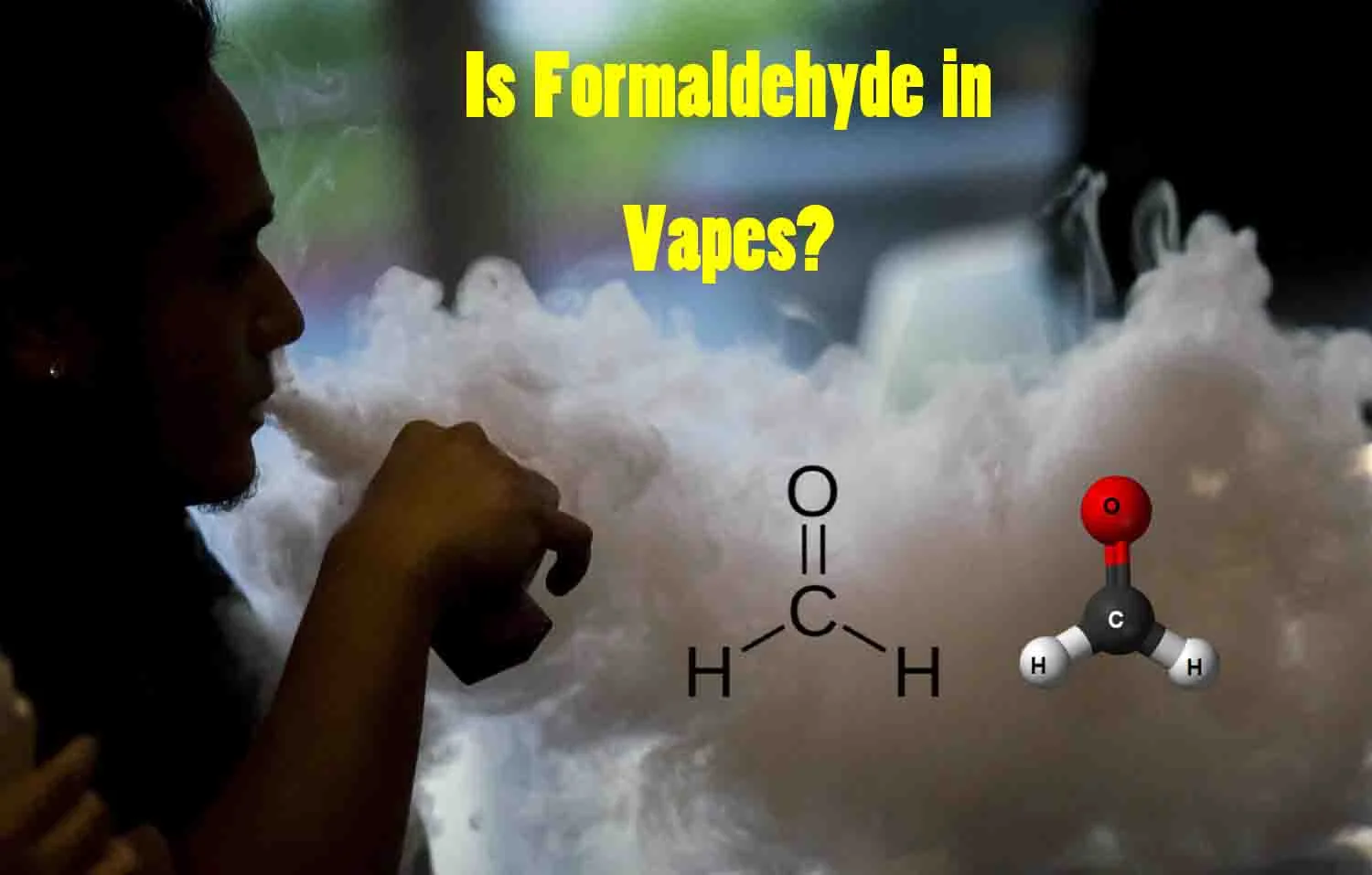Is Formaldehyde Contained in Vapes?

Vape use or vaping is considered a healthier alternative to cigarette smoking and may help in smoking cessation.
However, some people are negative about this, and One of the most common argument they offer is that vaping produces formaldehyde.
Formaldehyde is a known carcinogen to humans by the inhalation route of exposure, especially at high concentrations - certainly not something that anyone would want to inhale.
So, is formaldehyde in vapes Do vapes produce dangerous formaldehyde levels? Is it pickling your insides or leading you to an early death?
Here, we will answer this most common question about vapes (vaping) to help you clarify your doubts.
What Is Formaldehyde?
Formaldehyde is a colorless, strong-smelling, flammable gas that is widely used in building materials, disinfectants, and embalming fluids.
Formaldehyde can be pretty toxic to living creatures. Luckily, humans are good at breaking it down if ingested In small quantities.
However, if inhaled, and especially if inhaled continually over a long period of time, it starts messing with humans, causing leukemia and cancers of the nose, throat, and sinuses.
Is Formaldehyde Contained in Vapes?
Formaldehyde can be present in vape aerosol, but it’s not an ingredient that manufacturers add on purpose.
The e-liquid in vapes has four main components: propylene glycol, vegetable glycerin, nicotine, and flavorings. All ingredients produce vapor when heated.
When propylene glycol (PG) and vegetable glycerin (VG) are heated excessively—thermal decomposition can occur. This breakdown leads to the release of formaldehyde hemiacetals.
In real life, Formaldehyde is not present in "most" vapor. Formaldehyde can only form if e-liquid overheats, or if not enough liquid reaches the heating element (known as a “dry-puff”).
Overheat need a very high voltage setting, which is not found in common off-the-shelf vapers, and dry-puff would unquestionably result in a dry, burned, unpleasant puff.
At lower voltages, no formaldehyde hemiacetals were found. So you basically have to heat your e-juice to the point of burning it to get this issue.
In addition, Studies show that the average exposure to formaldehyde is around 1microgram per day and that vaping exposes the vaper to an additional 0.08micrograms.
This is drastically lower than the exposure to formaldehyde from smoking which is between 3.4 micrograms to 8.8 micrograms/cigarette. So you don't have to worry too much.
How to Reduce Formaldehyde Exposure When Vaping?
Formaldehyde is a known carcinogen, so minimizing exposure is important.
If you want to reduce formaldehyde exposure risks in vaping, there are several steps you can take:
1. Avoid High Voltage Settings
Vaping at moderate wattage/voltage setting, and avoid overheating High Voltage Settings, as this can overheat the coil and degrade e-liquid compounds.
2. Prime Coils Properly
When filling the cart or tank with e-liquid, Always ensure the wick is fully saturated to prevent dry hits, which increase the risk of thermal degradation.
3. Replace Old Coils Regularly
Burnt or degraded coils can lead to overheating and higher emissions.
Learn the key signs that it's time to change your vape coil. It's best to replace your coil once you taste burning.
4. Avoid Chain Vaping
Chain vaping continuously may cause your e-liquid and vape to overheat. Allow your device to cool down in between puffs to avoid this.
In Conclusion
Your vape is not producing any dangerous levels of formaldehyde, unless you’re regularly vaping at high voltage/temp setting or even dry hits.
Under normal usage, exposure is minimal and significantly less than from smoking traditional cigarettes. That is true, no matter what the media says.
Consumers who are concerned about formaldehyde or other toxicants in vapor should prioritize proper device usage, and regular coil changes to minimize potential risks.
